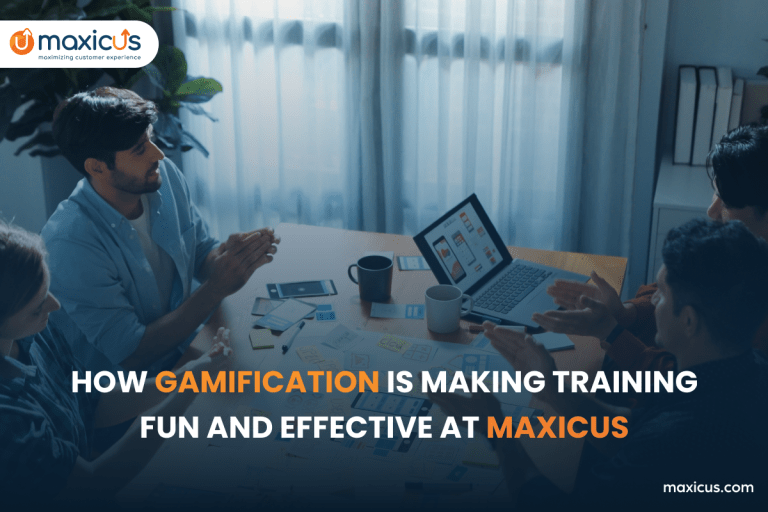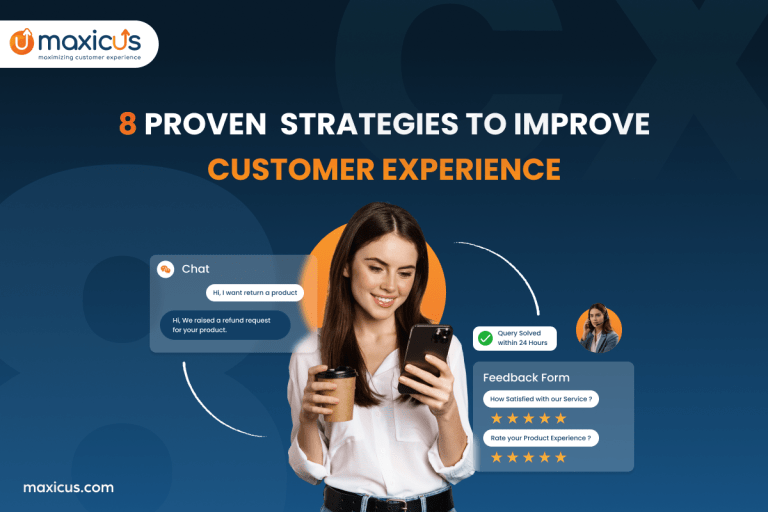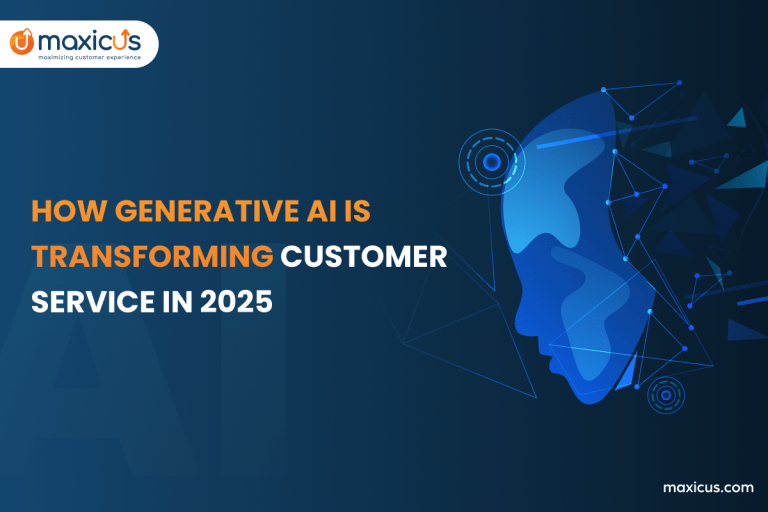5 Key Metrics to Measuring Customer Experience Success
With so many choices available today, customers are no lon ger just buying products; they’re choosing experiences. In fact, 86% of customers are willing to pay more for a better experience, and companies that prioritize customer experience (CX) see revenues grow 4–8% above their competitors. Focusing on CX isn’t just a smart move — it’s essential for building lasting relationships with your customers.
But how do you measure something as complex as customer experience? This is where key metrics come into play. These metrics offer clear insights into how well your brand is connecting with customers and where you might need to make improvements. At Maxicus, we’ve been helping leading brands fine-tune their customer journeys by focusing on the right metrics, enabling them to turn everyday interactions into significant revenue opportunities.
In this blog, we’ll dive into five key metrics that are essential for measuring customer experience success. Understanding and leveraging these metrics can help your brand not only meet but exceed customer expectations, leading to long-term loyalty and growth.
Importance of Key Performance Indicators for Customer Experience Success
Key Performance Indicators (KPIs) are essential for understanding how well your customer experience strategies are working. These indicators serve as measurable values that reflect how effectively your business is achieving its CX goals.
KPIs allow you to track progress, compare performance over time, and make data-driven decisions that enhance customer satisfaction. By consistently monitoring these indicators, you can ensure that your CX efforts are aligned with your business objectives and are contributing to overall success. In essence, KPIs are the compass guiding your brand toward creating meaningful and memorable customer experiences.
Understanding Customer Experience Metrics
1. Net Promoter Score (NPS)
Net Promoter Score, or NPS, is a renowned client satisfaction measure that evaluates loyalty to a brand and the chances that customers will recommend the company to others. Customers are requested to assess their chances of referring the business on a 0 to 10 scale.This information is used to calculate NPS. Customers are separated into three categories based on their responses: The promoters (9–10), Passives (7–8), and Detractors (0–6).
Promoters have committed customers who will promote growth by continuing buying and refer others. Customers who are passive satisfied yet uninterested and are therefore open to offers from rivals. Opponents are dissatisfied clients who could tarnish your company’s reputation and impede growth through unfavorable word of mouth.
2. Customer Satisfaction Score (CSAT)
A customer’s level of fulfillment with a specific interaction or their overall experience with a business is measured by their Customer Satisfaction Score (CSAT). Customers are usually asked to rate their level of satisfaction on a scale of 1 to 5 or 1 to 10. CSAT scores provide immediate feedback on the customer’s experience and point out areas that need work.
3. Customer Effort Score (CES)
The score for customer effort (CES) measures how simple it is for customers to finish a task or get an issue with an organization solved. Customers undergo polling about their experience, rating it from “Very Difficult” to “Very Easy.” Higher customer happiness and loyalty could come from an easier-to-interact-with business, as shown by a lower customer satisfaction number (CES).
4. First Contact Resolution (FCR)
First Contact Resolution, or FCR, evaluates the amount of customer issues that are resolved within the first few interactions with customer service. Excellent customer service can be seen by high first contact resolution rates (FCRs), which reduce the need for follow-up interactions and increase customer satisfaction.
5. Customer Lifetime Value (CLTV)
A predictive data named the customer lifetime value (CLV) measures how much revenue a company could be expecting from one customer over the course of their relationship. Companies can identify high-value clients and adjust their strategies to maximize long-term profitability by understanding CLV.
- 73% of consumers feel that the customer experience plays a significant role in their choice to buy, according to a PwC study.
Key Performance Indicators for Customer Experience Success
1. Customer Retention Rate
The number of consumers which an organization maintains over a particular period of time can be calculated by its customer retention percentage. While low rates may suggest issues with the customer experience that need to be fixed, high retention rates indicate that customers are pleased and committed.
2. Churn Rate
The number of customers which stop doing business with a company when a particular period of time is referred to as the churn rate, which is the opposite of the rate of retention. A high turnover rate may be a sign of dissatisfaction and bring out areas that need improvement.
3. Average Resolution Time
The average time it takes for customer care to address a problem is measured by the average resolution time. Customer satisfaction tends to increase with lower resolution times because consumers want prompt and effective solutions to their issues.
4. Customer Complaint Rate
The total amount of complaints generated compared to all interactions with customers is monitored by the customer complaint rate. A high complaint rate could be a sign of more serious issues with the customer experience that need to be fixed.
5. Customer Engagement Score
The level of involvement and engagement customers have with a brand is measured by the consumer interaction score. This can involve using social networking sites, browsing internet pages, or taking part in rewards programs. A higher level of participation between the brand and its customers is indicated by greater involvement scores.
Leveraging AIOps and Digital Transformation for Better Customer Experience Metrics
The Role of AIOps in Enhancing Customer Experience
Artificial Intelligence for IT Operations, or AIOps, is a new method that uses AI and machine learning to maximize IT processes and boost customer experience measures. AIOps helps businesses to offer customers faster and more dependable services by automating and maximizing a number of processes. Maxicus uses AIOps to maintain a watch on interactions with customers, identify possible problems, and take action to fix them before they harm the customer experience.
Digital Transformation: A Catalyst for Improved Customer Experience
With the goal to boost operations while offering customers better value, digital change involves integrating technological advances into all aspects of a company. Maxicus utilizes the digital revolution to improve channels of communication, accelerate customer service methods, and provide unique customer experiences.
This not only boosts customer satisfaction but also enhances key performance indicators for customer experience success.
Strategies to Improve Customer Experience Metrics
1. Personalized Customer Interactions
Improving customer experience metrics needs customization. Businesses may modify how they communicate according to the interests and needs of consumers by utilizing information about customers. In order to understand how customers behave and provide individualized experiences that are attractive to them, Maxicus uses advanced data analysis.
2. Omnichannel Support
Increasing customer experience metrics requires providing help smoothly over multiple platforms. By offering omnichannel support, Maxicus allows consumers to interact with the organization through the channels of their preference, such as chat, email, social media, and phone. By providing reliable and convenient service, this increases consumer satisfaction and loyalty.
3. Proactive Customer Service
Anticipating demands from clients and addressing possible issues before they arise are instances of proactive customer care. Maxicus identifies patterns and trends in consumer behavior using predictive analytics and AIOps, enabling proactive measures that enhance the customer experience as an entire entity.
4. Continuous Feedback and Improvement
Understanding customer experience metrics and identifying possibilities for improvements requires collecting and analyzing customer feedback. Strong mechanisms for feedback have been put in place by Maxicus to collect feedback from customers and use them to continually enhance their services and methods.
5. Employee Training and Engagement
Having engaged and well-trained staff is essential to providing outstanding customer service. Maxicus commits major investments in thorough instruction to give its staff members the skills and know-how needed to deliver outstanding customer service. Employees who are concerned about their work are more willing to go beyond what is required in satisfying customers.
Measuring Success with Customer Experience Metrics
The Impact of Improved Customer Experience Metrics
Business success is directly affected by improving customer experience metrics. Improved satisfaction with consumers, loyalty, and engagement result in more profits, reduced unemployment, and an increased recognized brand. Organizations may achieve long-term profitability and profitable expansion by focusing on key performance indicators for customer experience success.
- 62% of businesses consider the customer experience provided by contact centers to be a differentiator in the marketplace, according to Deloitte research.
Case Study: Maxicus’ Success in Enhancing Customer Experience Metrics
Maxicus has an excellent track record of helping organizations in digital transformation and AIOps to enhance customer experience metrics. With the use of modern technologies and data-driven strategies, Maxicus has assisted organizations significantly increase their NPS, CSAT, CES, FCR, and CLtV. The visible benefits of focusing on customer experience indicators and key performance indicators for customer experience success are shown by these examples of success.
Explore the Future of Shopping
Conclusion
For organizations wishing to succeed in the competitive marketplace of nowadays, it is important for them to understand and improve customer experience metrics. By the use of key performance indicators for customer experience success, organizations can verify that they are successfully meeting consumer needs and growing positive engagements. Maxicus offers the experience and resources required to enhance customer experience metrics and accelerate business achievement by its creative application of AIOps and digital transformation. Businesses may increase consumer satisfaction, loyalty, and long-term earnings through using these insights and strategies.










